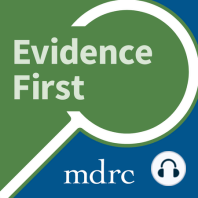11 min listen

What Happens When You Combine an Accelerated Academic Program with Workplace Exposure and Career Skills?
FromEvidence First
What Happens When You Combine an Accelerated Academic Program with Workplace Exposure and Career Skills?
FromEvidence First
ratings:
Length:
15 minutes
Released:
Jun 4, 2020
Format:
Podcast episode
Description
New types of career and technical education programs are trying to prepare workers for an increasingly complex labor market. For high school students, this preparation can mean combining academic study with a strong career focus and hands-on work experience with an industry partner. MDRC is testing the effectiveness of this approach in an evaluation of the New York City P-TECH 9-14 school model. P-TECH 9-14 schools collaborate with local community colleges to allow students to earn high school diplomas and cost-free, industry-recognized associate’s degrees at the same time. During the six-year program, employer partners support P-TECH 9-14 schools by providing students with work-based learning experiences such as internships, mentoring, and job shadowing. Interim results show that after three years, students in P-TECH 9-14 schools earn about two more credits than students at other schools. Students in P-TECH 9-14 schools also pass state-level proficiency exams earlier and pass at higher rates. In this episode, Leigh Parise talks about the NYC P-TECH grades 9-14 high school model and MDRC’s study with Rachel Rosen, codirector of MDRC's Center for Effective Career and Technical Education and co-principal investigator on the study.
Released:
Jun 4, 2020
Format:
Podcast episode
Titles in the series (57)
Career and Technical Education: Past, Present, and Future: This summer Congress passed the long-awaited reauthorization of the Carl D. Perkins Career and Technical Education Act, which governs the federal investment in career and technical education (CTE). But what do CTE programs actually do? And how have... by Evidence First